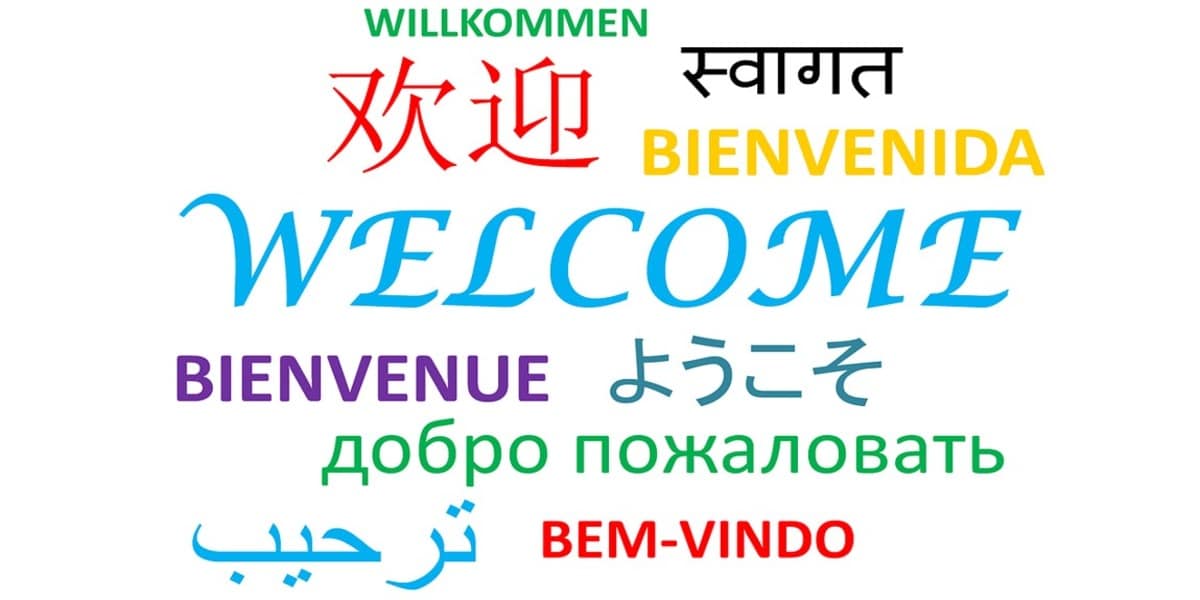Using hreflang tags is your secret weapon to help search engines know the right version of your site. They should display when users log on from a different country or region and speak another language. However, nailing down these tags is not always easy. That is why you should follow some guidelines for using hreflang tags to improve your international SEO.
In this guide, we take a deep dive into hreflang tags to show you how to use them properly. By the end of this guide, you will know everything from what keywords are and why they matter to how to set them up properly.
What is the hreflang tag?
Hreflang is an HTML attribute that helps search engines like Google know URL language and geo-targeting. This is for websites that will have their content in more than one language and specifically different versions of a website tailored to specific countries. The hreflang tag tells search engines where they should direct users, depending on the user and the language at which a specific page is targeted.
It’s a tag that you have to put in the body of a page, looking like this: : <link rel=”alternate” hreflang=”x” href=”https://example.com/page-in-language-x” />. The “x” stands for the language code, like “en” for English or “es” for Spanish. This tag points to the preferred version of the page for speakers of that language.
Implementing hreflang tags ensures that search engines display the correct version of your website to users. This, in turn, provides a better user experience and improves any opportunity you have to engage with those individuals. This is especially important for companies with a global market, as it improves search and steers users in the direction of the content that matters most to them.
When should you use the hreflang tag for international SEO?
No matter the stage of your start-up growth, having a solid international SEO strategy is necessary in today’s digital world for broader online reach and expansion. This is where hreflang tags come into play since they allow search engines to understand the connection between each of these different language and country-specific website versions.
If you do not add hreflang, maybe the search engine will show this or that website version to a user and then get less-than-perfect results in searches. The last thing you would want is for users who searched your website in the English language to go on pages that are not curated in English or that do not correspond with their desired location, thus frustrating them and potentially leaving.
Proper hreflang tags will help search engines display the correct version of your site, improve user experience, and drive engagement. Optimization is important for a few SEO metrics, such as visibility, click-through rates, and international search performance. Moreover, they eliminate the chances of duplicity in the content, which could severely affect your search rankings.
How do hreflang tags work?
Hreflang tags tell search engines the language and geographical importance of a page. When a person searches for something, the engine decides which version to display based on their location with the help of hreflang tags.
In a hreflang tag, you need two things: the language code and the URL of that webpage. The language code is normally a 2-letter ISO 639-1 code, and the URL takes you to an internet site for that specific language or place.
Search engines like Google use this information to recognize the connection between various website versions. They then display the most relevant version of a page, leading to proper content.
Problems with hreflang Tags
Here are all the mistakes you make while setting up hreflang and best practices to avoid them:
Using incorrect language/country codes in hreflang tags. A website needs to have a unique hreflang tag, one for each of the canonical URLs. If more than two are specified, this can lead to errors. Make sure you always use the proper ISO 639-1 language codes and ISO 3166-1 alpha-2 country codes to avoid misunderstandings.
Another is not having complete hreflang tags set for all the languages and countries in which your website is available. If you miss some, search engines may not present the appropriate webpage version for a given user query, affecting your performance ineligibly.

7 tips to setting up your tags
It is crucial to apply the best practices so that your hreflang tags work as intended and give you proper results. The most important thing to remember is:
- Full Set of Hreflang Tags: Ensure that all tags for your site’s language and country versions are available. This means you must use the correct codes and URLs for each one.
- Proper Syntax: Get your hreflang tags in the right format, like this: <link rel=”alternate” hreflang=”x” href=”https://example.com/page-in-language-x” />.
- Along with that, the Hreflang tags should be placed in your head section. This helps search engines to find them easily.
- Consistency is critical: A page’s hreflang tags should be consistent with the language and country targeting associated with that page. However, if they do not, the engines may be confused.
- Set x-default: Add an x-default hreflang tag in case it is impossible to tell anything about the user’s language/location. Thus, it shows a default version of your site.
- Make Sure to Keep Your Tags Updated: Audit and update your hreflang tags according to updates to your site’s language or country versions.
- Prioritize Relevant Versions: If you have different versions of a page for the same language and country, use the rel=”canonical” tag. This will indicate to Google which version is more suitable.
Sticking to these practices will help search engines serve your site’s correct version to users, which is good news for international SEO.
How to test and verify these tags
It is important to test and validate your hreflang tags.
- Check your hreflang tag errors via the “International Targeting” report in Google Search Console.
- Be sure to periodically check the hreflang tags on your website, ensuring they are properly formatted and linking out to the correct URLs. You can use Browser developer tools or online validators to do this.
- To ensure that your site appears correctly, you can try searching from different places and languages. This will help you to identify the issues with your hreflang setup.
- Pay attention to how your site is displayed in search results to make sure the correct pages are showing.
- Frequent Audits: These audits will help you keep your hreflang tags significant and up-to-date according to the changes on your website.
Taking these steps will get you a long way. They will help ensure your hreflang tags are set up properly and supporting your international SEO efforts effectively..
Hreflang tags for regional language versions of a site
Consistency and Thoroughness when using hreflang tags for various language versions of your site. Here’s what to consider:
- Identify all the languages on your site, not just their main ones.
- Your versions should use the appropriate ISO 639-1 language codes to let search engines match content with users’ languages.
- Ensure that a Hreflang tag for each version points to the correct URL.
- If you have more than one language version of your site, apply hreflang tags consistently to point search engines in the right direction.
- If you need to account for regional languages, such as the difference between Spanish in Spain (es-ES) and Latin America (es-MX), use the appropriate language and country codes.
- Set x-default Value: Add the x-default hreflang tag alongside your other language codes to offer a default site version for users with no known preferred locale.
These practices ensure that search engines display the most relevant language-specific content in front of users.
Hreflang for different country versions of the same website
Hreflang tags are also important for websites targeting particular countries or regions. Consider the following:
- Find Country Variants. Identify all country-specific versions of your site.
- Corerect Country Codes. Leverage the proper ISO 3166-1 alpha-2 country codes for every version to target content geographically.
- An hreflang tag for every country version. Assign one hreflang tag to each country version, with the appropriate URL.
- Consistent Implementation. This ensure a consistent hreflang application, leaving no room for error in relation to search engine clarity.
- Variants of language. When you offer the same language in different countries, combine the right language code with country codes locales (e.g., en-US, en-GB).
- Set x-default Value. An x-default hreflang tag should link to the default version of your site for users with no known nearby location.
By following these suggestions, you help search engines provide content according to the user’s location.
Best practices for large websites
While it can be intimidating to add hreflang tags for those of us who work with large sites, they are extremely important if you want your website to optimize effectively internationally. Here are some tips:
- Automate It: Employ a CMS plugin or custom script to generate hreflang tags programmatically, which will save you time and help reduce the possibility of human error.
- Masterlist Centralized Database: Maintain a master list of all version websites and hreflang tags with URLs to simplify management.
- Fast Forward to Crucial Versions: Save a few more links for your main traffic drivers, then use x-default on the others.
- Avoid manually verifying your hreflang tags through automated checks and user testing.
- Manage through Your Content: Integrate into your content management workflow so you can update hreflang tags with existing web properties.
- Continuous Monitoring and Improvement: Monitor the performance of your hreflang tags on an ongoing basis, adjusting as needed based on search results and user data.
These practices make maintaining hreflang tags on complex sites less difficult, allowing you to implement the best international SEO possible.
Conclusion
To sum up, hreflang tags are important for international SEO. They help search engines display the correct version of your site to specific users according to their language and location. Use the appropriate language and country codes, describe all your site versions correctly to ensure a top-quality user experience for global users, and regularly test and validate them. Follow established patterns and avoid these mistakes to enhance your website in the global market and rank on search engines.
Do you want to rank content on Google worldwide? Check out our outreach campaign management services here. Our professionals are there to help you reach your goal. Get in touch to find out how we can improve your SEO efforts. We’re also just a click away on Facebook and LinkedIn.
Images are from Pixabay.com



How to Get Google Ratings for Your Business
Local Maps SEO: Unlocking Visibility and Driving Local Traffic for Your Business